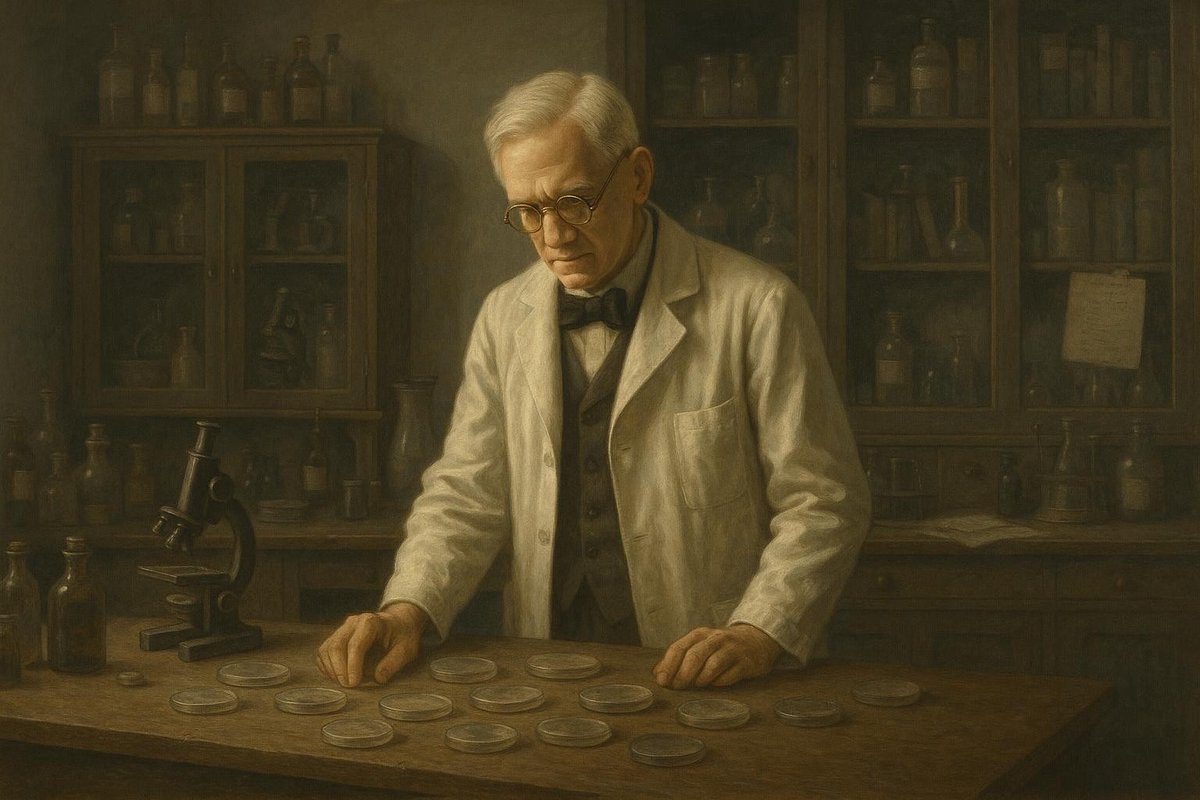
Origin: An Unexpected Mold That Changed Science
In 1928, something seemingly insignificant at the time occurred in Alexander Fleming’s laboratory at St. Mary’s Hospital, London. Curiously, a petri dish containing Staphylococcus bacteria was accidentally left uncovered. What could possibly come of an oversight as simple as this?
- Fleming observed that the mold, later identified as Penicillium notatum, inhibited bacterial growth.
- This accidental observation would later prove pivotal in the development of antibiotics.
Before this discovery, bacterial infections were often deadly, with few reliable treatments available. Doctors and researchers were aware of the dire need for effective antibacterial agents, yet the means to develop them remained elusive. Interestingly, it was a simple oversight, a forgotten petri dish, that laid the groundwork for one of the most significant medical breakthroughs of the 20th century. This chance event in Fleming’s laboratory marked the beginning of a new era in medicine.
Key Figures: Alexander Fleming and His Serendipitous Curiosity
Fleming’s path to discovery was characterized by his methodical yet serendipitous approach to scientific inquiry. Despite the accident, it was his keen observation skills that turned a random occurrence into a groundbreaking discovery. What made Fleming’s approach so unique?
- He was known for his meticulous documentation of even the slightest laboratory changes.
- His curiosity led him to investigate the antibacterial properties of Penicillium.
Many people believe that his openness to unexpected findings made all the difference. Of course, Fleming wasn’t working in isolation. It was the vibrant scientific community of early 20th-century Britain, with its mix of old traditions and new ideas, that nurtured such discoveries. His work was a testament to the notion that sometimes, the greatest scientific advances arise not from what we plan, but from what we allow ourselves to see.
Turning Point: From Mold to Miracle Cure
The journey from Fleming’s observation to penicillin’s widespread use wasn’t instantaneous. The next step required turning this raw observation into a practical medical treatment. What challenges did scientists face along the way?
- Initially, isolating and producing penicillin in usable quantities was a substantial hurdle.
- It wasn’t until the advent of World War II that significant resources were devoted to its mass production.
As time goes on, it’s clear that the war effort played a crucial role in accelerating penicillin’s development. The need for effective treatments for wounded soldiers pushed penicillin production to industrial scales. By the early 1940s, penicillin was saving countless lives, reshaping our approach to treating infections and laying the foundation for modern antibiotics.
Impact on the World: A Medical Revolution
The discovery of penicillin had far-reaching consequences, fundamentally altering the landscape of modern medicine. How did this single discovery transform global health?
- It dramatically reduced mortality rates from bacterial infections.
- It paved the way for the development of a range of antibiotics, changing healthcare forever.
In the broader context of civilization, penicillin’s impact extended beyond healthcare. It underscored the importance of scientific research, curiosity, and the willingness to embrace unexpected outcomes. The ripple effect of Fleming’s discovery is still felt today, as antibiotics remain a cornerstone of medical treatment worldwide. No wonder Fleming’s serendipitous observation continues to be celebrated as one of history’s most significant scientific breakthroughs.
In conclusion, Alexander Fleming’s discovery of penicillin in 1928 marked a profound turning point in medical history. It exemplified the power of curiosity, preparedness, and indeed, the role of luck in scientific advancement. As we look back on this revolutionary period, we are reminded of the intertwined nature of serendipity and science.
Fuel Someone Else’s Curiosity
If you found this exploration into the discovery of penicillin intriguing, why not share it with others? Spark a conversation, inspire a budding scientist, or simply spread the wonder of how a simple mold changed the world.

Leave a Reply